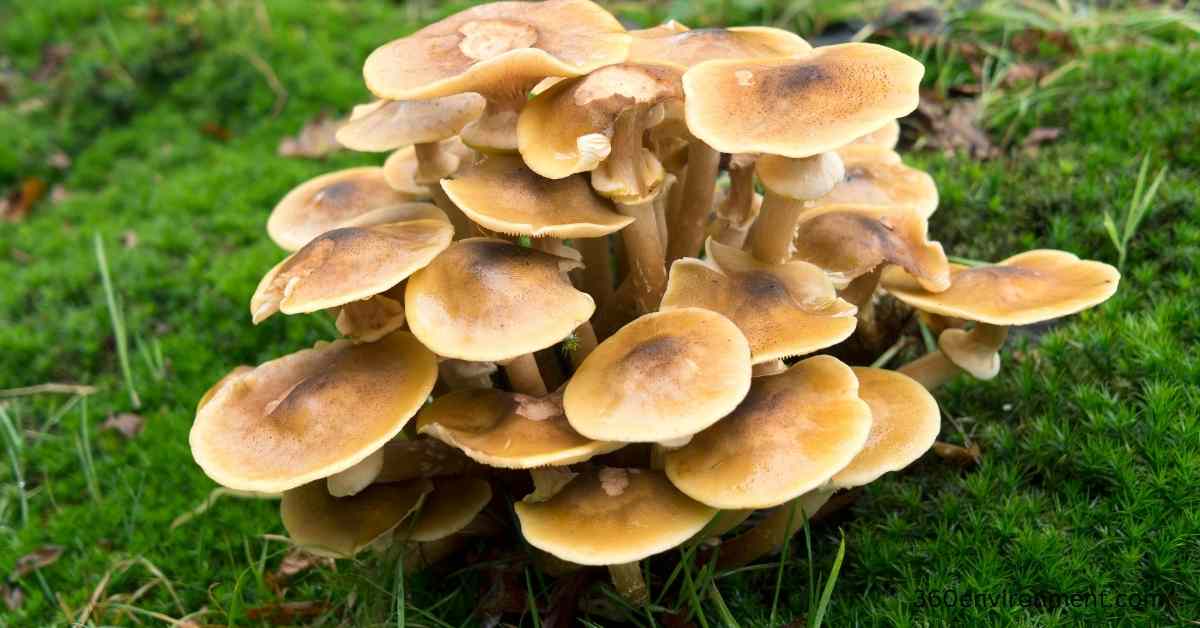Honey fungus, known scientifically as Armillaria, refers to a group of parasitic fungi that thrive on both living and dead wood. While it’s notorious for causing root rot and the death of trees, it also offers potential for sustainable cultivation when properly managed. Honey fungus is not just a destructive pathogen; it’s a significant component of forest ecosystems, contributing to wood decay, nutrient cycling, and biodiversity. Cultivating honey fungus in a controlled environment, for both culinary and ecological purposes, opens up new avenues for sustainable practices in agroforestry and mushroom cultivation.
In this article, we will explore honey fungus cultivation, its ecological role, the process of cultivating it sustainably, and the environmental impact of its growth. While honey fungus can be a devastating disease for trees, understanding how to cultivate and control it can unlock both ecological benefits and potential uses in food production.
1. Understanding Honey Fungus Cultivation: Characteristics and Ecological Role
Honey fungus is a parasitic fungus that belongs to the Armillaria genus, which includes several species. It is characterized by its honey-colored caps, gills, and stems, and its tendency to spread through underground rhizomorphs (root-like structures). These fungi are both saprophytic, meaning they decompose dead organic matter, and parasitic, as they invade and feed on living trees.
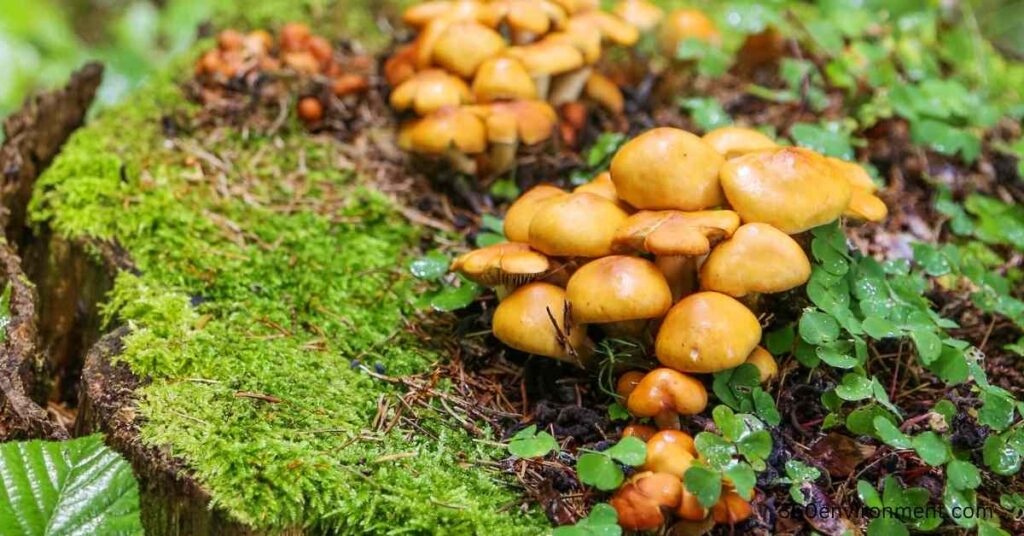
1.1 Species of Honey Fungus
Several species fall under the term “honey fungus,” with the most common ones being:
- Armillaria mellea – The most well-known and aggressive species, capable of destroying trees.
- Armillaria ostoyae – Famous for forming one of the largest living organisms, a fungal colony in Oregon spanning several square kilometers.
- Armillaria tabescens – A non-rhizomorph-producing species, less aggressive than others but still a concern for trees.
1.2 Ecological Role
Honey fungus plays an important role in forest ecosystems by decomposing dead trees and woody material. It recycles nutrients back into the soil, supporting the health of the surrounding environment. However, when it becomes parasitic, it can destroy healthy trees, especially those already stressed or weakened by other factors. In nature, it contributes to forest succession by killing older trees, allowing younger ones to grow in their place.
In sustainable cultivation practices, the goal is to harness the ecological benefits of honey fungus without allowing it to become destructive to crops or landscapes. This is where controlled cultivation and careful management come into play.
2. The Dual Nature of Honey Fungus
Honey fungus is both a pathogen and a decomposer, making its relationship with the environment complex. Its ability to rapidly spread and colonize large areas underground through its rhizomorphs makes it both highly effective in breaking down dead wood and extremely dangerous to live plants. Understanding this dual nature is essential to managing its cultivation.
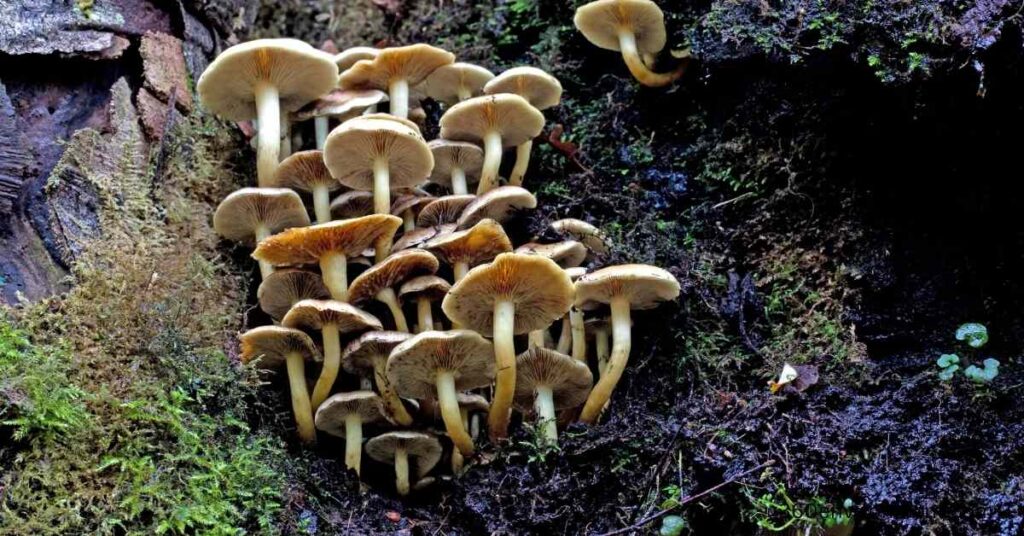
2.1 Parasitic Impact on Trees
Honey fungus targets the root systems of trees, gradually invading and killing them. It spreads through rhizomorphs that extend several meters underground, infecting nearby trees and shrubs. It is particularly problematic in orchards, vineyards, and forests where tree species susceptible to Armillaria are prevalent.
2.2 Decomposition and Nutrient Cycling
In its saprophytic form, honey fungus is a critical player in wood decay, breaking down lignin and cellulose in dead trees and contributing to the nutrient cycle. This decomposition process releases essential nutrients like nitrogen and phosphorus into the soil, making it available for other plants. In forest ecosystems, the presence of honey fungus contributes to soil fertility and supports plant biodiversity by ensuring a steady turnover of organic matter.
3. Cultivating Honey Fungus: A Sustainable Approach
Despite its reputation as a harmful pathogen, honey fungus can be cultivated sustainably for both ecological and culinary purposes. The key to successful cultivation lies in understanding its life cycle, managing its spread, and using controlled environments to harness its potential benefits.
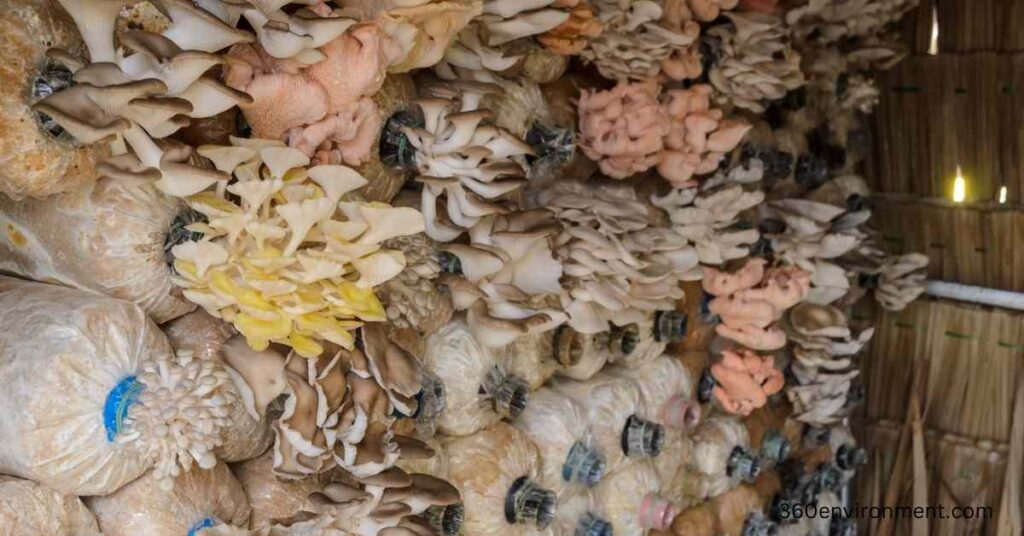
3.1 Site Selection for Cultivation
When cultivating honey fungus, the choice of site is crucial. Since honey fungus is aggressive and can spread easily, it’s important to isolate the cultivation area from other susceptible plants. Ideal locations for honey fungus cultivation include areas with dead wood, stumps, or decaying plant matter where the fungus can thrive without threatening live vegetation.
3.2 Choosing the Right Substrate
Honey fungus can be cultivated on a wide range of substrates, primarily dead wood. This includes:
- Tree stumps
- Fallen logs
- Woodchips
- Mulch
The substrate should be placed in a controlled environment where the fungus can grow without causing damage to nearby trees or plants. Decaying wood from non-susceptible trees can be used to create a safe cultivation zone.
3.3 Spawning and Growth Process
Once a suitable substrate is selected, the next step is inoculating it with honey fungus spores or mycelium. This can be done using spawn plugs or by introducing colonized wood to the substrate. Over time, the fungus will colonize the wood, producing mycelial mats and eventually fruiting bodies (mushrooms).
The growth process of honey fungus is slow but persistent. Depending on the conditions, it may take months to years for the mushrooms to appear. Temperature, moisture, and substrate quality all play a role in the growth rate.
4. Culinary Uses of Honey Fungus
While honey fungus is known for its destructive capabilities, it is also a prized edible mushroom in many cultures. However, proper preparation is essential, as raw honey fungus can be toxic and cause digestive upset.
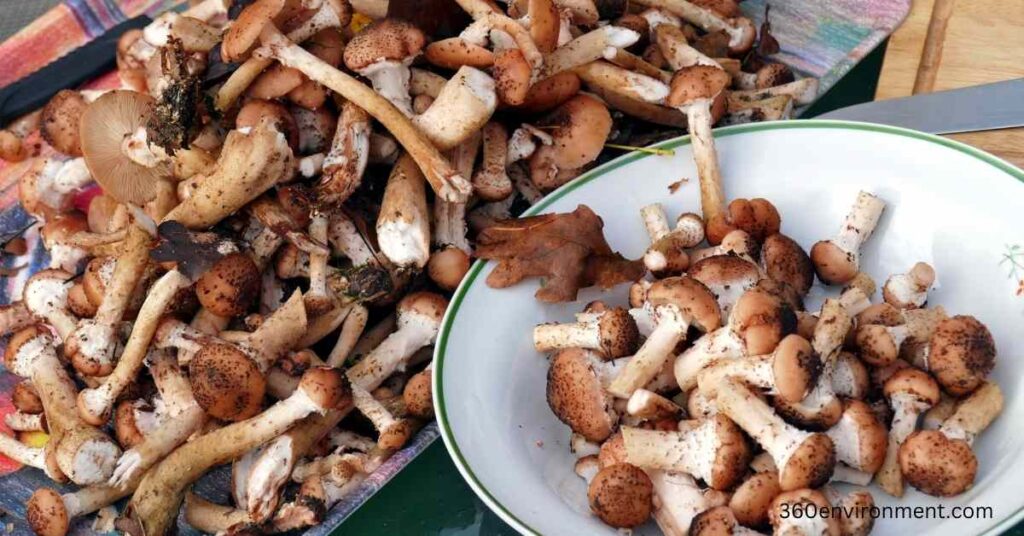
4.1 Harvesting Honey Fungus
Honey fungus can be harvested once the fruiting bodies (mushrooms) appear, typically in late summer to autumn. The honey-colored caps are the edible portion of the fungus, while the stems are often too tough to consume. When foraging or cultivating honey fungus, it is important to correctly identify the species to avoid confusion with poisonous look-alikes.
4.2 Preparing Honey Fungus for Consumption
Before consumption, honey fungus must be thoroughly cooked to break down its toxins. This involves boiling the mushrooms for at least 15 minutes before sautéing or adding them to dishes. Honey fungus is commonly used in soups, stews, and sautéed with other vegetables.
The flavor of honey fungus is often described as mildly sweet and earthy, making it a versatile addition to various culinary creations. Its texture is firm, and it holds up well in hearty dishes.
5. Managing the Risks: Preventing the Spread of Honey Fungus
Honey fungus cultivation requires careful management to prevent it from spreading beyond the controlled cultivation area. Without proper control, the fungus can spread via its rhizomorphs and infect live trees, causing significant damage.
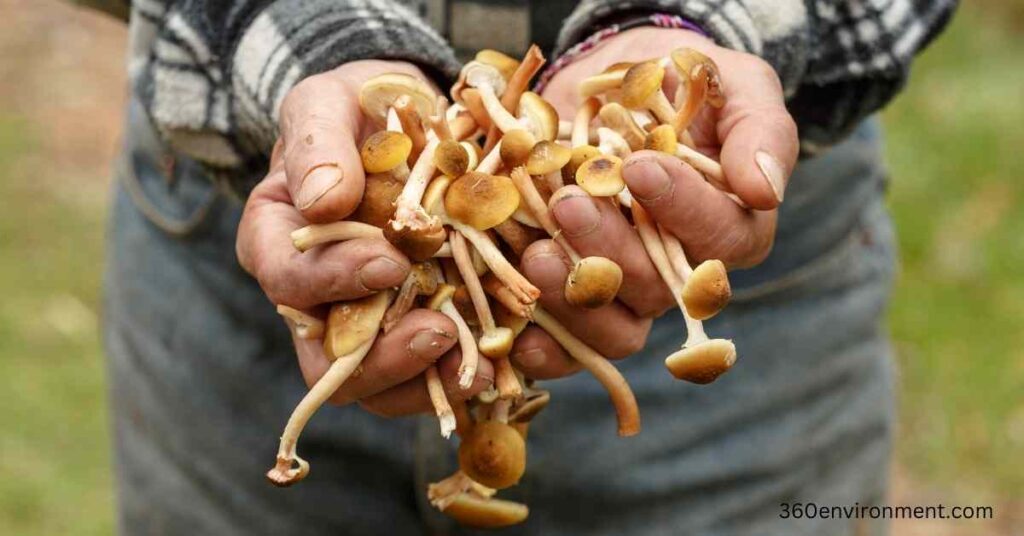
5.1 Barrier Techniques
One of the most effective ways to prevent honey fungus cultivation is by creating physical barriers around the cultivation site. This can include:
- Digging trenches around the perimeter of the site to sever rhizomorphs and prevent them from spreading.
- Using impermeable materials, such as plastic sheeting, to block the movement of the fungus underground.
5.2 Regular Monitoring
Monitoring the cultivation site regularly is essential for early detection of any unwanted spread. Look for signs of honey fungus infection, such as wilting leaves, discolored bark, or the presence of rhizomorphs on nearby trees. Early intervention can prevent the fungus from becoming a larger problem.
5.3 Tree Selection
If cultivating honey fungus near other trees or plants, it’s important to choose species that are resistant or tolerant to Armillaria. Some tree species, such as pines and oaks, are more susceptible to infection, while others, such as eucalyptus or juniper, are more resistant. Planting resistant species can help reduce the risk of fungal spread.
6. Environmental Impact and Ecological Considerations
While honey fungus is often seen as a destructive force in managed landscapes, it also plays a critical role in natural ecosystems. Its role in nutrient cycling, biodiversity promotion, and forest succession makes it an important ecological player.
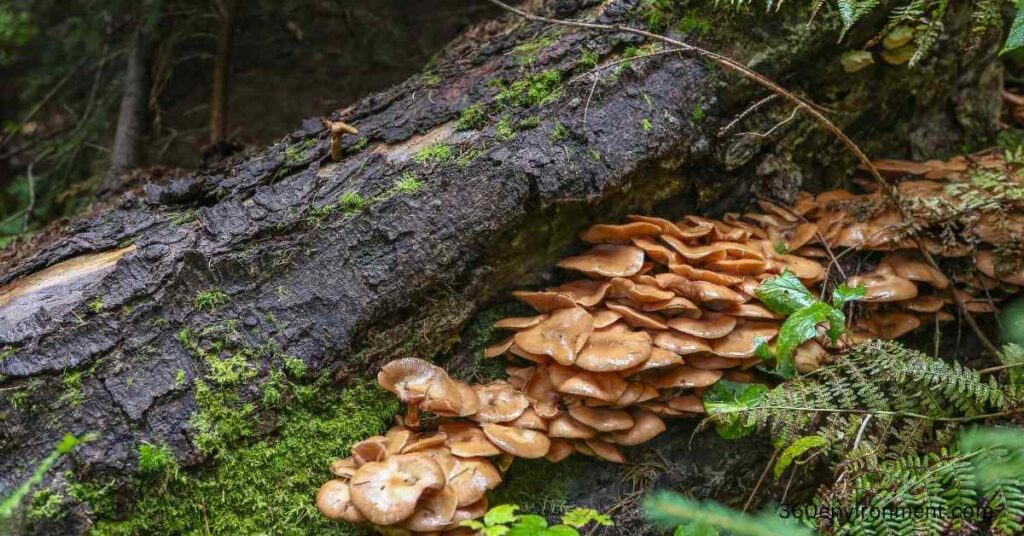
6.1 Biodiversity Promotion
By decomposing dead trees and woody material, honey fungus helps promote biodiversity in forest ecosystems. It creates microhabitats for various species of insects, fungi, and other organisms that rely on decaying wood for survival. Its presence supports the complex web of life in forested areas.
6.2 Forest Succession
Honey fungus contributes to the process of forest succession by clearing out older or weaker trees, making room for younger and more resilient species to grow. This natural thinning process helps maintain a healthy and dynamic forest ecosystem. In managed forests, this role can be harnessed to encourage forest regeneration and diversity.
6.3 Soil Health and Fertility
The decomposition of wood by honey fungus releases essential nutrients into the soil, enhancing its fertility and supporting the growth of new plants. This nutrient cycling is crucial in maintaining soil health and promoting sustainable plant growth in both natural and managed environments.
7. Future Prospects: Sustainable Honey Fungus Cultivation
As the world becomes more focused on sustainable practices, honey fungus cultivation offers a unique opportunity to explore the intersection of mushroom farming and ecological management. With proper control and monitoring, honey fungus can be cultivated for both its ecological benefits and culinary uses without causing harm to surrounding ecosystems.
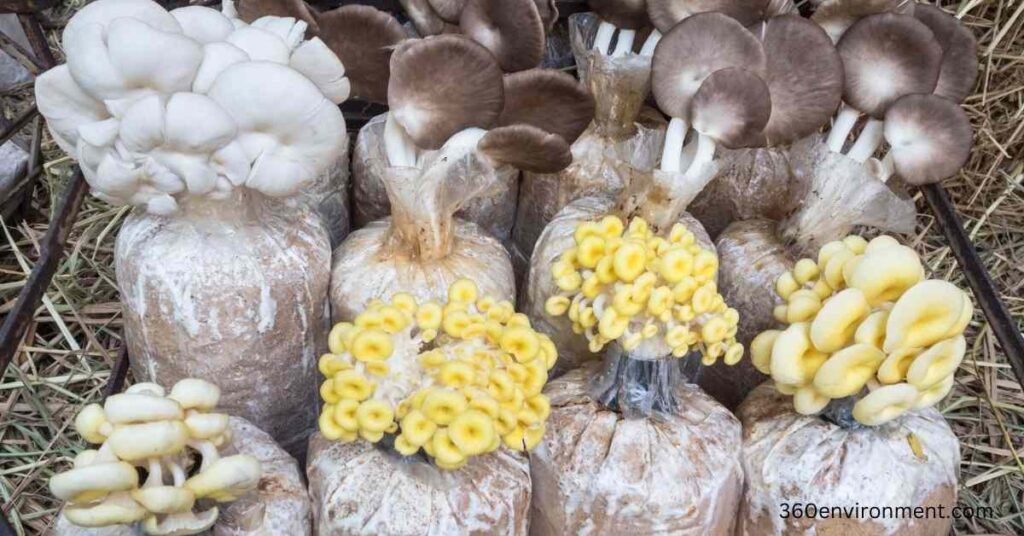
7.1 Integrating with Agroforestry
Agroforestry systems, which combine trees and crops on the same land, could benefit from controlled honey fungus cultivation. By incorporating honey fungus into these systems, farmers can harness its decomposing abilities to improve soil health while also producing a valuable mushroom crop.
7.2 Research and Development
Ongoing research into the life cycle, behavior, and control of honey fungus is essential for its sustainable cultivation. Understanding the specific conditions that promote its saprophytic behavior (as opposed to parasitic) can help develop more effective cultivation techniques and reduce the risk of unintentional spread.
Conclusion
Honey fungus presents both challenges and opportunities for sustainable cultivation. By understanding its dual role as a decomposer and parasite, and by adopting careful cultivation techniques, it’s possible to harness the ecological benefits of honey fungus while minimizing its risks. Sustainable honey fungus cultivation has the potential to contribute to food production, soil health, and biodiversity in a way that aligns with environmentally friendly practices. With proper management, this remarkable fungus can be an asset rather than a threat to our ecosystems.
Read More: Flowers Are Blooming in Antarctica: A Remarkable Shift in the World’s Coldest Continent

